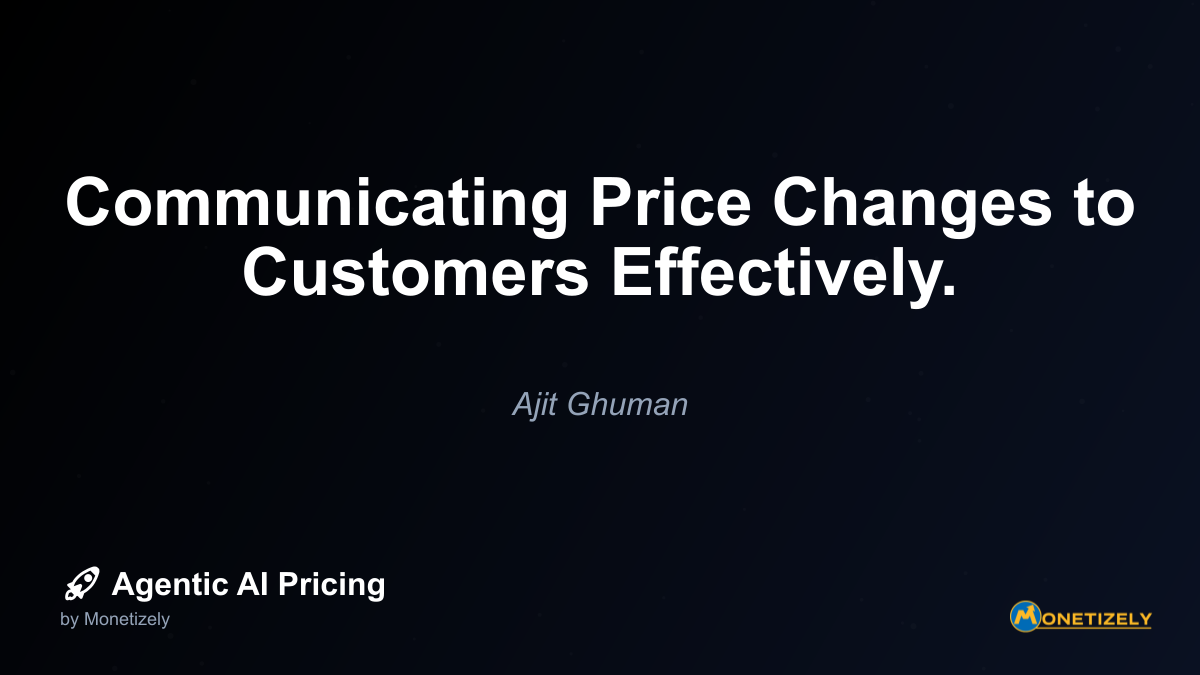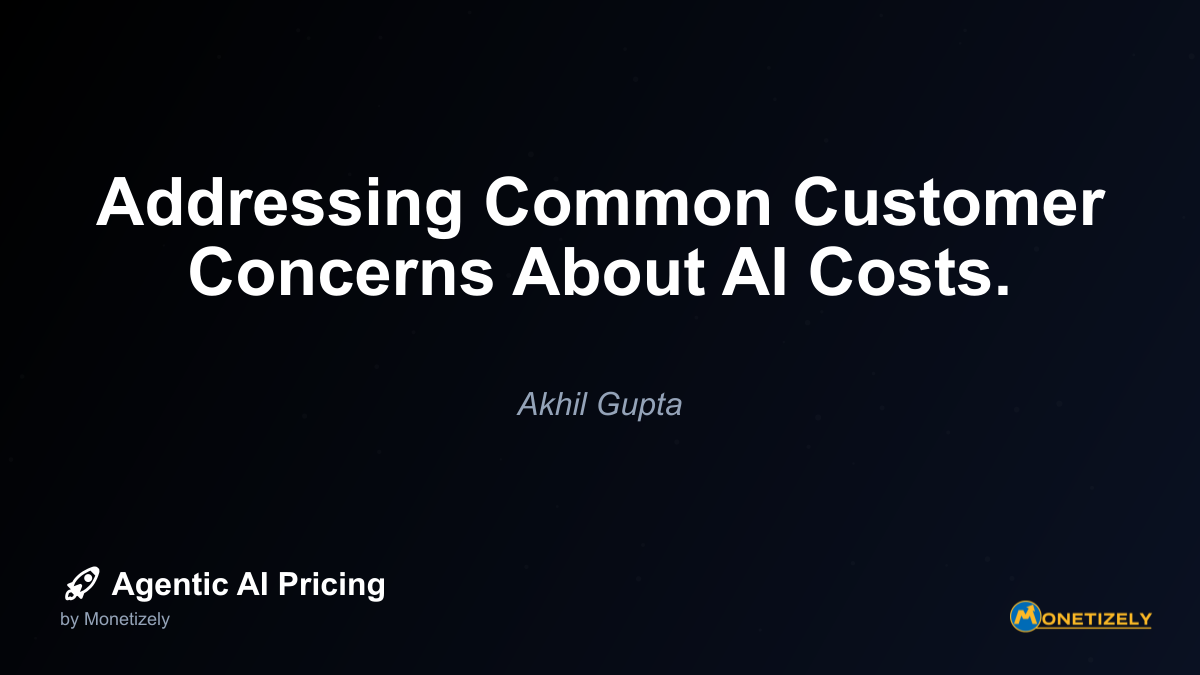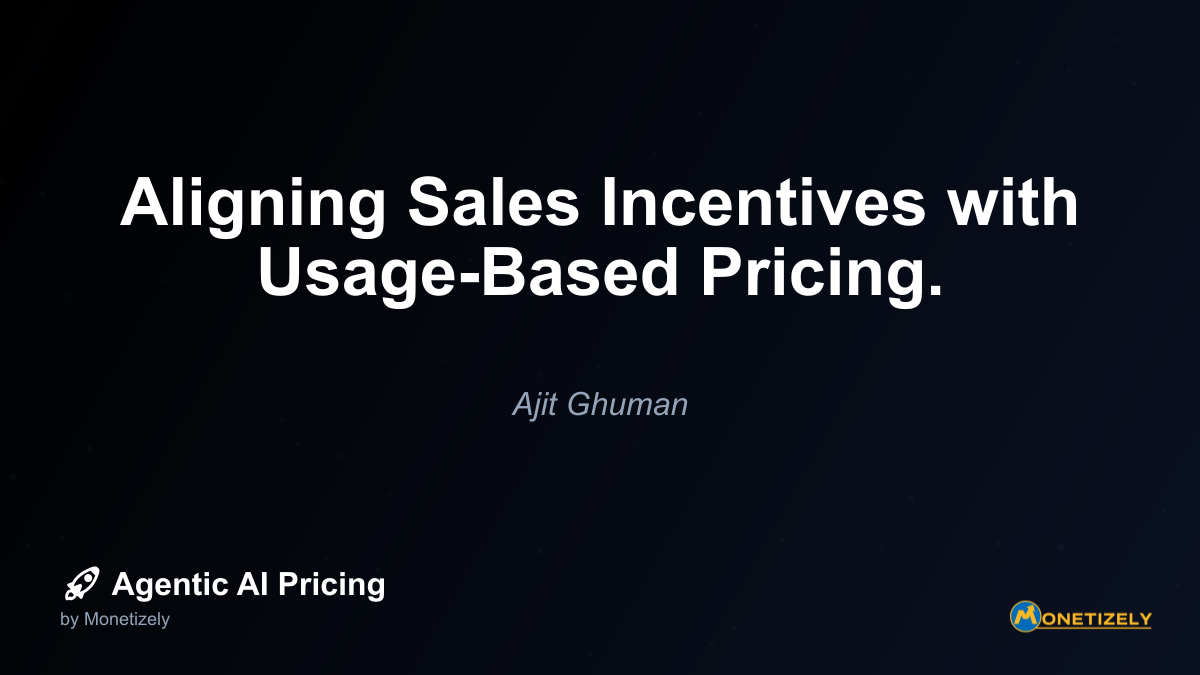· Ajit Ghuman · Best Practices · 5 min read
Communicating Price Changes to Customers Effectively.
AI and SaaS Pricing Masterclass
Learn the art of strategic pricing directly from industry experts. Our comprehensive course provides frameworks and methodologies for optimizing your pricing strategy in the evolving AI landscape. Earn a professional certification that can be imported directly to your LinkedIn profile.

Preparing Your Team for Customer Responses
Even the best communication strategy will generate questions and concerns. Preparing your team to handle these effectively is crucial:
1. Comprehensive Internal Training
Before announcing any price changes:
- Conduct thorough training sessions with customer-facing teams
- Develop detailed FAQ documents with consistent messaging
- Create response templates for common scenarios
- Role-play difficult conversations to build confidence
2. Empowering Support Teams
Give your support and success teams:
- Authority to make certain concessions when appropriate
- Access to decision-makers for escalation when needed
- Clear guidelines on when to escalate issues
- Tools to quickly access customer history and context
3. Monitoring and Adapting
After announcing price changes:
- Track common questions and concerns
- Update your FAQ and training materials as needed
- Identify patterns that might indicate communication gaps
- Share insights across teams to improve future communications
Measuring the Success of Your Price Change Communication
How do you know if your price change communication was effective? Consider these metrics:
1. Retention Metrics
- Customer churn rate during the notice period
- Renewal rates following implementation
- Downgrades vs. upgrades after the change
2. Sentiment Indicators
- Support ticket volume and themes
- Social media sentiment analysis
- Direct feedback from customer calls
- Survey responses specifically about the communication
3. Financial Impact
- Revenue retention compared to projections
- Customer lifetime value changes
- Acquisition costs for replacement customers
- Overall revenue impact versus targets
Creating a Price Change Communication Template
While each price change requires customization, having a template ensures you cover all critical elements:
Executive Announcement Email Template
Subject: Important Update to [Product Name] Pricing Effective [Date]
Dear [Customer Name],
We're reaching out to inform you about upcoming changes to our pricing structure that will take effect on [specific date].
[Context paragraph: Brief explanation of market conditions, company investments, or other relevant factors driving the change]
What's changing:
- [Clear, specific bullet points detailing the exact changes]
- [Include old vs. new pricing when possible]
- [Note any grandfathering or transition provisions]
What you're gaining:
- [Bullet points highlighting new features, improvements, or value additions]
- [Quantify benefits where possible]
- [Connect improvements to customer outcomes]
Next steps:
1. [Review the detailed information at (link)]
2. [Contact your account manager with questions]
3. [Consider available options such as locking in current rates]
We value your business and remain committed to your success. If you have any questions or concerns, please don't hesitate to reach out to [specific contact person/team] at [email/phone].
Sincerely,
[Executive Name]
[Title]Handling Negative Reactions to Price Changes
Even with perfect communication, some customers will react negatively. Preparing for these reactions is essential:
1. Listen First
When customers express frustration:
- Allow them to fully articulate their concerns
- Acknowledge their perspective without becoming defensive
- Ask clarifying questions to understand specific pain points
- Express appreciation for their feedback
2. Provide Context Again
Often, customers need to hear the rationale multiple times:
- Restate the value proposition in terms relevant to their specific use case
- Share industry benchmarks if applicable
- Explain long-term product roadmap benefits
- Connect the price change to specific improvements they value
3. Offer Solutions When Possible
Look for ways to address legitimate concerns:
- Suggest feature configurations that might optimize their costs
- Explore alternative pricing tiers that might better suit their needs
- Consider temporary accommodations during transition periods
- Provide usage analysis to help them optimize their spending
4. Know When to Escalate
Some situations require higher-level intervention:
- Strategic accounts with significant revenue impact
- Customers experiencing unique hardships
- Cases where misunderstandings about value persist
- Situations where contract terms may be in question
The Future of Price Change Communication in Agentic AI
As agentic AI continues to evolve, pricing communication will need to adapt as well. Future trends to consider:
1. Predictive Value Communication
Advanced AI systems will increasingly be able to predict and demonstrate value before price changes:
- Personalized ROI calculations based on usage patterns
- Predictive modeling of future benefits
- Customized value demonstrations based on customer profiles
2. Dynamic Pricing Communication
As pricing becomes more dynamic and value-based:
- Real-time pricing dashboards will become standard
- Continuous value tracking will replace point-in-time justifications
- Transparent algorithms will explain pricing fluctuations
3. Collaborative Price Evolution
The future may bring more collaborative approaches:
- Customer councils providing input on pricing structures
- Community-based feature prioritization tied to pricing
- Transparent development costs shared with customers
- Co-creation of value metrics and pricing models
Conclusion: Building Trust Through Transparent Price Communication
Effective price change communication is ultimately about maintaining trust while ensuring business sustainability. By providing adequate notice, clearly explaining the rationale, highlighting added value, and offering options, businesses can navigate price changes while preserving customer relationships.
For agentic AI companies specifically, price changes represent an opportunity to educate customers about evolving value propositions and demonstrate the ongoing innovation that justifies premium pricing. When handled with transparency and empathy, price change communications can actually strengthen customer relationships by reinforcing your commitment to honest business practices.
Remember that price communication isn’t a one-time event but part of an ongoing value conversation with your customers. The most successful companies view pricing discussions as opportunities to reinforce value, gather feedback, and deepen customer relationships rather than necessary evils to be minimized.
By implementing the strategies outlined in this guide, you can transform potential pricing friction points into opportunities for building trust and demonstrating your commitment to customer success—ultimately creating more sustainable, profitable relationships for the long term.
For more insights on strategic pricing communication, you might find our article on Communicating a Price Increase: How to Notify Customers and Minimize Churn helpful, which provides additional templates and case studies on effective customer communication strategies during pricing transitions.
Co-Founder & CEO
Ajit is the author of Price To Scale, a top book on SaaS Pricing and is the Founder of Monetizely. Ajit has led and worked in pricing and product marketing at firms like Twilio, Narvar and Medallia. His work has been featured in Forbes and VentureBeat. Ajit regularly consults with software companies from Seed stage to post-IPO on pricing strategy. Ajit is also a highly-rated co-instructor for 'The Art of SaaS Pricing and Monetization' on Maven.
Pricing Strategy Audit
Let our experts analyze your current pricing strategy and identify opportunities for improvement. Our data-driven assessment will help you unlock untapped revenue potential and optimize your AI pricing approach.




